The Ordinary is an affordable and effective skincare brand that sells over 50 products, many focusing on one hero ingredient.
As a result, many The Ordinary products can be used together in the same routine to target specific skin concerns.

However, you should not mix some products due to the potential for irritation, an adverse reaction, and/or decreased efficacy.
It can get confusing quickly.
So in this The Ordinary Conflicts Guide, we’ll look at The Ordinary’s complete range of skin care products and discuss which ones shouldn’t be used together.
To see all The Ordinary conflicts, you can download my free PDF version of The Ordinary Conflicts Guide at the end of this post.
This post contains affiliate links, and any purchases made through these links will result in a commission for me at no extra cost to you. Please read my Disclosure for additional information.
The Ordinary Conflicts
This guide can help you avoid common pairing mistakes and get the most out of your skincare products from The Ordinary.
These guidelines are based on The Ordinary’s recommendations to give you a starting point to build your skincare routine.
Keep in mind that opinions on certain combinations may vary, and what works for your skin may not work for someone else’s. Pay attention to how your skin reacts to certain product combinations.
If you are interested in The Ordinary skincare routines based on skin type, check out my post on how to build a skincare routine with The Ordinary products.
And finally, The Ordinary recommends patching testing before using any new product to avoid an unwanted initial reaction.
The Ordinary Direct Acids Conflicts
| THE ORDINARY DIRECT ACIDS | DO NOT USE WITH: |
|---|---|
| AHA 30% + BHA 2% Peeling Solution Azelaic Acid Suspension 10% Glycolic Acid 7% Toning Solution Lactic Acid 5% + HA Lactic Acid 10% + HA Mandelic Acid 10% + HA Salicylic Acid 2% Masque Salicylic Acid 2% Solution Salicylic Acid 2% Anhydrous Solution | ❌ Peptides ❌ Copper Peptides ❌ EUK134 0.1% ❌ 100% Niacinamide Powder ❌ Other Direct Acids ❌ Pure Vitamin C (ascorbic acid) ❌ Ethylated Vitamin C ❌ Retinol ❌ Retinoids |
As you can see from the table above, The Ordinary direct acids conflict with quite a few product types.
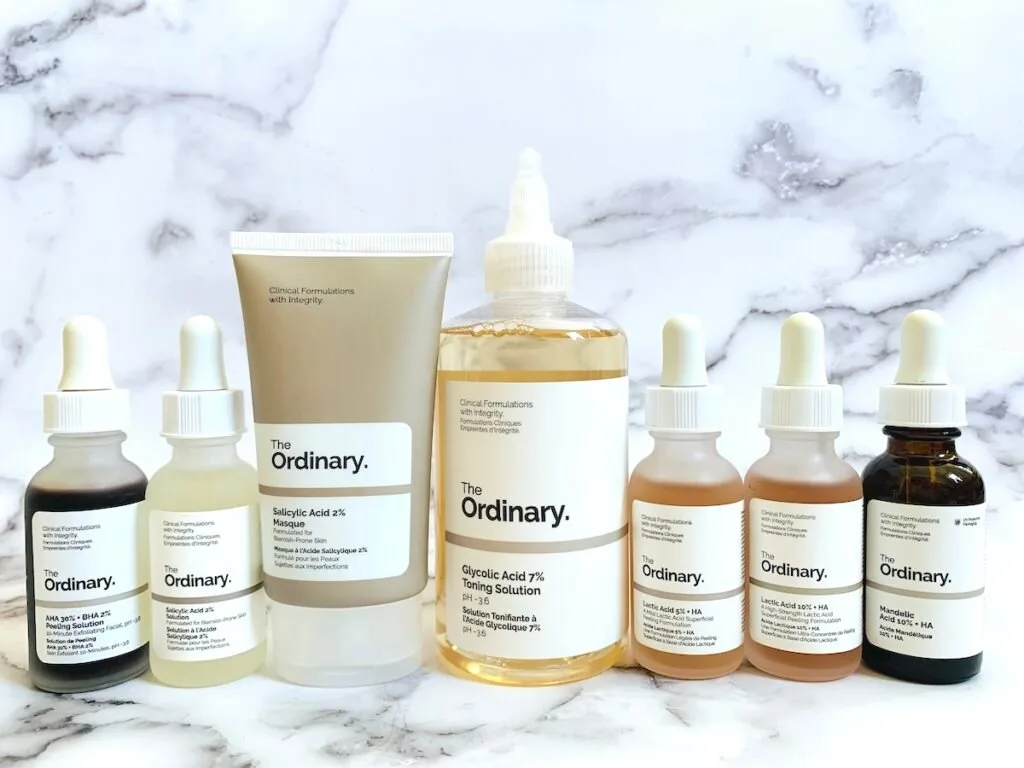
Direct acids are exfoliating acids, including alpha hydroxy acids (AHAs) and beta hydroxy acids (BHAs):
- AHA 30% + BHA 2% Peeling Solution
- Azelaic Acid Suspension 10%
- Glycolic Acid 7% Toning Solution
- Lactic Acid 5% + HA
- Lactic Acid 10% + HA
- Mandelic Acid 10% + HA
- Salicylic Acid 2% Masque
- Salicylic Acid 2% Solution
- Salicylic Acid 2% Anhydrous Solution
Since these products have an exfoliating effect on the skin, it’s best to avoid using them in the same routine as other potent actives, such as other direct acids, pure vitamin C (ascorbic acid), ethylated vitamin C, retinol, and other retinoids.
You can use direct acids and conflicting active ingredients at different times of the day or on alternate days.
All The Ordinary acids should not be mixed with peptides, copper peptides, and EUK134 0.1%, as the acids may degrade these formulas.
Also, avoid mixing these direct acids with The Ordinary 100% Niacinamide Powder.*
*The Ordinary 100% Niacinamide Powder must be mixed with a water-based formula with a pH between 5.0 and 7.0. Since acids tend to have a low pH, they should not be mixed with 100% Niacinamide Powder.
The Ordinary Vitamin C Conflicts
The Ordinary offers eight vitamin C products, five pure vitamin C products, and three vitamin C derivatives.
The Ordinary Pure Vitamin C (Ascorbic Acid)
| THE ORDINARY PURE VITAMIN C | DO NOT USE WITH: |
|---|---|
| 100% L-Ascorbic Acid Powder Ascorbic Acid 8% + Alpha Arbutin 2% Ethylated Ascorbic Acid 15% Solution Vitamin C Suspension 23% + HA Spheres 2% Vitamin C Suspension 30% in Silicone | ❌ Peptides ❌ Copper Peptides ❌ EUK134 0.1% ❌ Niacinamide powder and serum ❌ Direct Acids ❌ Pure Vitamin C ❌ Ethylated Vitamin C ❌ Retinol ❌ Retinoids |
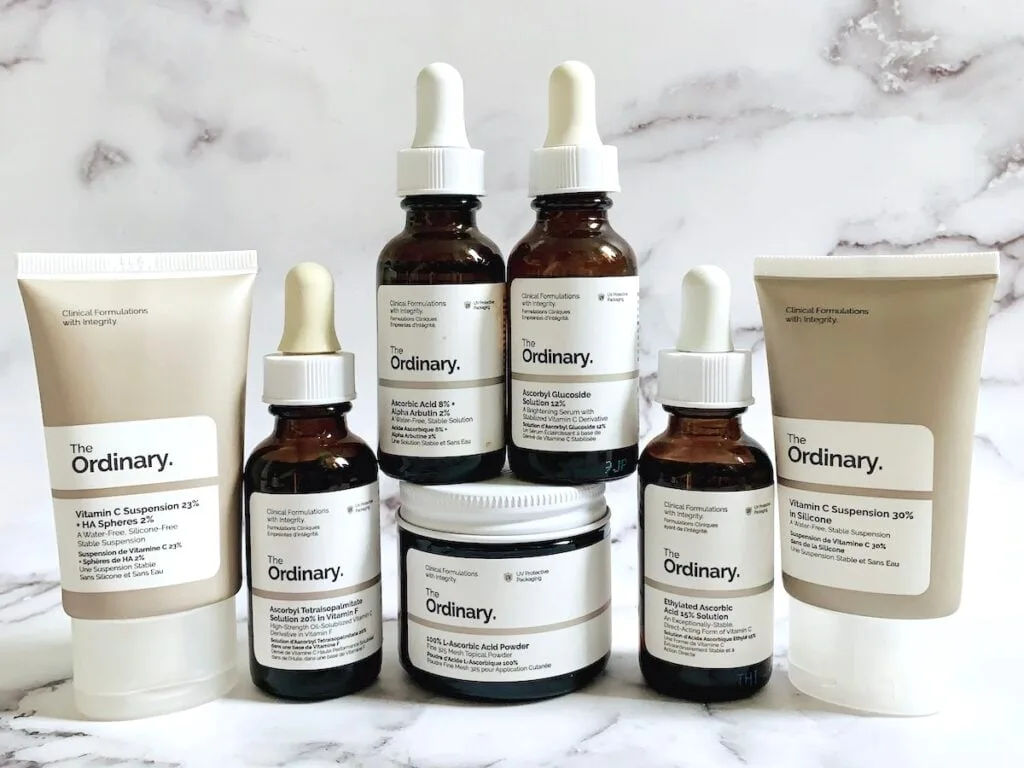
- 100% L-Ascorbic Acid Powder
- Ascorbic Acid 8% + Alpha Arbutin 2%
- Ethylated Ascorbic Acid 15% Solution
- Vitamin C Suspension 23% + HA Spheres 2%
- Vitamin C Suspension 30% in Silicone
Pure vitamin C (ascorbic acid) products are formulated at a low pH to be effective. In fact, pure vitamin C pH levels under 3.5 are the most effective.
So when mixed with higher pH products like peptides, it may cause oxidation and affect the efficacy of the active.
So avoid using the pure vitamin C products above with copper peptides, peptides, and EUK134 0.1% due to its potent formula, as well as other pure or ethylated vitamin C products.
You also shouldn’t mix pure vitamin C products with other strong actives like direct acids, retinol, and retinoids, since other potent or highly acidic formulas may cause irritation or an adverse skin reaction.
Mixing pure vitamin C with acids and retinol is debatable, though, depending on your skin tolerance. Many factors come into play when combining these actives, like product formulas, concentrations, and skin type.
I think it’s always better to be safe than sorry when it comes to my somewhat sensitive skin, so I avoid mixing pure vitamin C with any strong actives.
If using potent actives, you can use vitamin C products at a different time of the day or on alternate days.
Vitamin C and Niacinamide
There is much confusion about whether or not you can combine vitamin C products with niacinamide.
Outdated research from the early 1960s indicated that when non-stabilized vitamin C and niacinamide were combined at high temperatures for an extended period of time, niacinamide would transform into nicotinic acid, which can irritate the skin.
But since we don’t combine niacinamide with vitamin C products at such high temperatures, this potential reaction is usually not an issue.
BUT… The Ordinary does not recommend combining The Ordinary pure Vitamin C products with their niacinamide serum or powder due to The Ordinary’s unique formulas.
Combining these actives might reduce the effectiveness of the products.
The Ordinary Vitamin C Derivatives
| THE ORDINARY VITAMIN C DERIVATIVES | DO NOT USE WITH: |
|---|---|
| Ascorbyl Glucoside Solution 12% Ascorbyl Tetraisopalmitate Solution 20% in Vitamin F Magnesium Ascorbyl Phosphate 10% (currently being reformulated) | ❌ Niacinamide (powder and serum) |
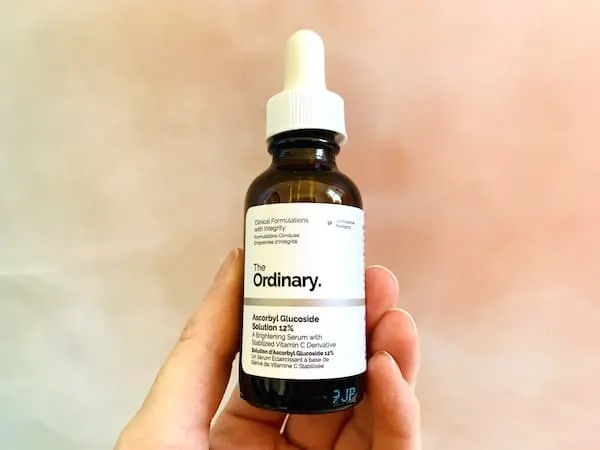
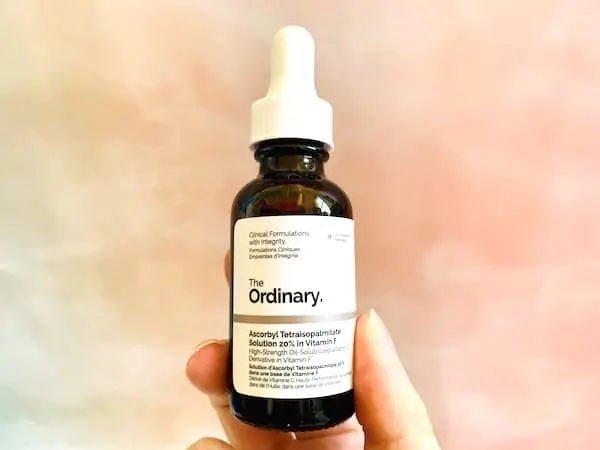
- Ascorbyl Glucoside Solution 12%
- Ascorbyl Tetraisopalmitate Solution 20% in Vitamin F
- Magnesium Ascorbyl Phosphate 10% (currently being reformulated)
Vitamin C derivatives are more stable than pure vitamin C and are usually formulated at a pH that works better with other active skincare ingredients.
The Ordinary notes that their vitamin C derivative products conflict with and should not be used in the same routine as niacinamide since The Ordinary products are formulated in a way that might reduce effectiveness if combined.
Stick to using vitamin C derivatives and niacinamide on different days or at different times of the day.
For more details on using vitamin C in your skincare routine, be sure to check out my Guide To The Ordinary Vitamin C Products.
The Ordinary Peptide Conflicts
| THE ORDINARY PEPTIDES | DO NOT USE WITH: |
|---|---|
| Multi-Peptide Serum + HA (“Buffet”) Argireline Solution 10% Matrixyl 10% + HA | ❌ Direct Acids ❌ Pure Vitamin C ❌ Ethylated Vitamin C ❌ Resveratrol 3% + Ferulic Acid 3% |
| “Buffet” + Copper Peptides 1%* | ❌ Direct Acids ❌ Pure Vitamin C ❌ Ethylated Vitamin C ❌ Resveratrol 3% + Ferulic Acid 3% ❌ Retinol ❌ Retinoids |
| Multi-Peptide Eye Serum** | No conflicts if used as directed. See note below.* |
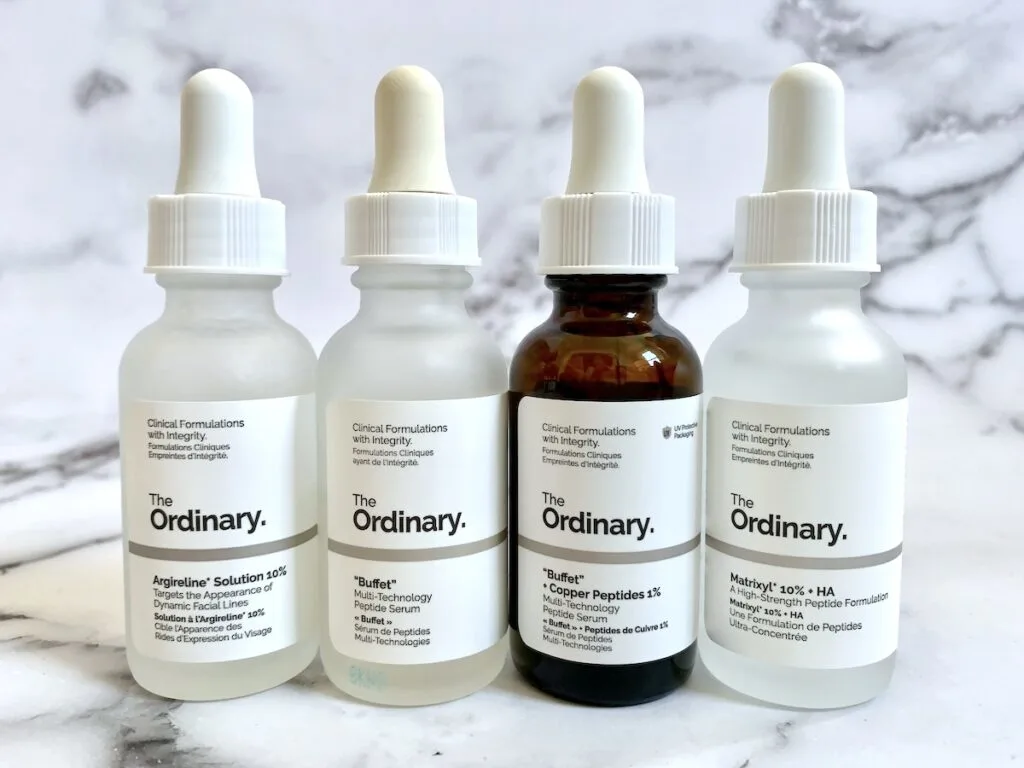
- Multi-Peptide Serum + HA (formerly known as “Buffet”)
- “Buffet” + Copper Peptides 1%*
- Argireline Solution 10% (see my review here)
- Matrixyl 10% + HA
- Multi-Peptide Eye Serum**
The Ordinary peptides are formulated in a way that they may lose potency if combined with direct acids, pure vitamin C, ethylated vitamin C, or Resveratrol 3% + Ferulic Acid 3%.
*Due to the copper peptides in the formula, you should not use “Buffet” + Copper Peptides 1% with direct acids, pure vitamin C, ethylated vitamin C, or Resveratrol 3% + Ferulic Acid 3% PLUS retinoids, including retinol.
**As long as you use the eye serum as intended around the eye area, there are no conflicts. But if the eye serum is used on other areas of your face, it may lose potency.
If the eye serum is mixed with direct acids, salicylic acid, pure vitamin C, ethylated vitamin C, or Resveratrol 3% + Ferulic Acid 3%, its formula may degrade.
For more info on The Ordinary Multi-Peptide Eye Serum, please see my review.
The Ordinary Retinol/Retinoid Conflicts
| THE ORDINARY RETINOL & RETINOIDS | DO NOT USE WITH: |
|---|---|
| Retinol 0.2% in Squalane Retinol 0.5% in Squalane Retinol 1% in Squalane Granactive Retinoid 2% Emulsion Granactive Retinoid 5% in Squalane Granactive Retinoid 2% in Squalane | ❌ Copper Peptides ❌ Direct Acids ❌ Pure Vitamin C ❌ Ethylated Vitamin C ❌ Other Retinol Products ❌ Other Retinoids |
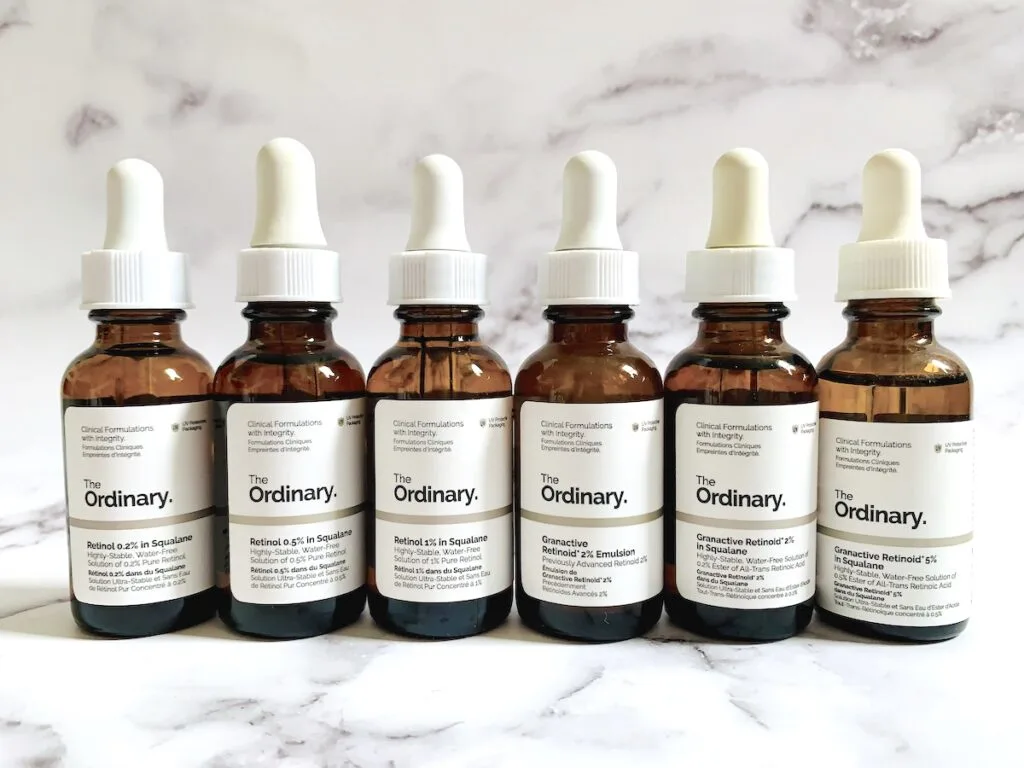
- Retinol 0.2% in Squalane
- Retinol 0.5% in Squalane
- Retinol 1% in Squalane
- Granactive Retinoid 2% Emulsion
- Granactive Retinoid 5% in Squalane
- Granactive Retinoid 2% in Squalane
Retinoids, including retinol, are potent actives that address the visible signs of aging.
While they can cause skin irritation and dryness when used on their own, if combined with other actives like copper peptides, direct acids, pure vitamin C, ethylated vitamin C, and other retinoid products, they might increase your skin’s sensitivity and cause further irritation.
So if you’re using retinoids, it’s better to use them alone or on alternate days with these conflicting actives.
The Ordinary Niacinamide Conflicts
| THE ORDINARY NIACINAMIDE | DO NOT USE WITH: |
|---|---|
| Niacinamide 10% + Zinc 1% | ❌ Pure Vitamin C ❌ Ethylated Vitamin C ❌ Vitamin C Derivatives |
| 100% Niacinamide Powder | ❌ Direct Acids ❌ Pure Vitamin C ❌ Ethylated Vitamin C ❌ Vitamin C Derivatives |
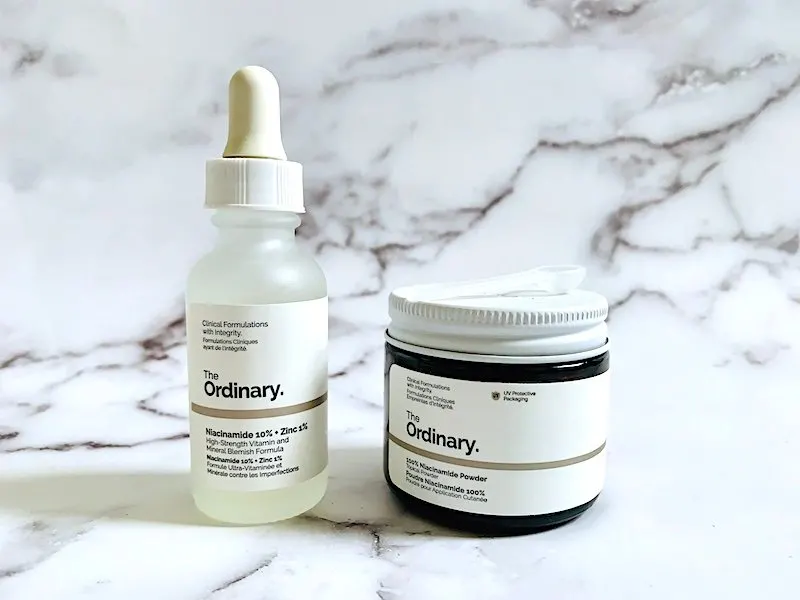
As previously noted, The Ordinary notes that their niacinamide serum and powder conflict with all forms of vitamin C, including pure vitamin C, ethylated vitamin C, and vitamin C derivatives.
Also, you should not mix The Ordinary’s niacinamide powder with direct acids.
***The Ordinary niacinamide powder must be mixed with a water-based product with a pH between 5.0 – 7.0. For more details, please see my review of The Ordinary niacinamide products.
Want a The Ordinary skincare routine that is tailored to your unique skin type and concerns? Take my exclusive The Ordinary Skincare Quiz now!
The Ordinary Antioxidant Conflicts
| THE ORDINARY ANTIOXIDANTS | DO NOT USE WITH: |
|---|---|
| EUK 134 0.1% | ❌ Copper Peptides ❌ Direct Acids ❌ Pure Vitamin C ❌ Ethylated Vitamin C ❌ Resveratrol 3% & Ferulic Acid 3% |
| Resveratrol 3% + Ferulic Acid 3% | ❌ Copper Peptides ❌ Peptides ❌ EUK134 0.1% |
| Pycnogenol 5% | ❌ Copper Peptides |
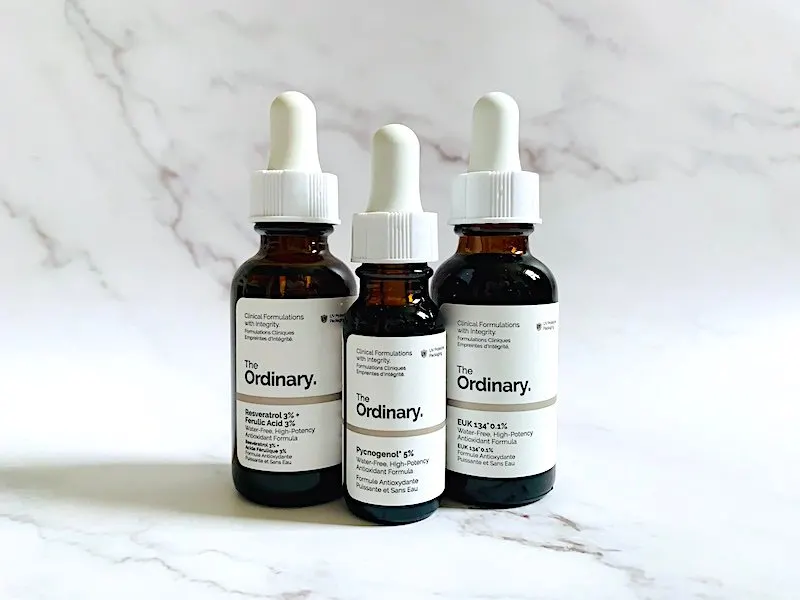
The Ordinary antioxidants include three serums designed to protect the skin from environmental stressors and promote a healthy, even skin tone.
The Ordinary antioxidants should not be combined with copper peptides, a potent antioxidant itself.
EUK 134 0.1% is a strong antioxidant serum that shouldn’t be used with other strong actives including copper peptides, direct acids, pure/ethylated vitamin C, and Resveratrol 3% + Ferulic Acid 3%.
Resveratrol 3% + Ferulic Acid 3% conflicts with copper peptides, peptides, and EUK134 0.1%.
Pycnogenol 5% conflicts with copper peptides.
The Ordinary Products Without Conflicts
| THE ORDINARY PRODUCTS – NO CONFLICTS |
|---|
| Squalane Cleanser “B” Oil 100% Organic Cold-Pressed Borage Seed Oil 100% Organic Cold-Pressed Moroccan Argan Oil 100% Organic Cold-Pressed Rose Hip Seed Oil 100% Organic Virgin Chia Seed Oil 100% Cold-Pressed Virgin Marula Oil 100% Organic Virgin Sea-Buckthorn Fruit Oil 100% Plant-Derived Squalane Amino Acids + B5 Hyaluronic Acid 2% + B5 Marine Hyaluronics Natural Moisturizing Factors + HA Natural Moisturizing Factors + PhytoCeramides 100% Plant-Derived Hemi-Squalane Alpha Arbutin 2% + HA Caffeine Solution 5% + EGCG Mineral UV Filters SPF 15 with Antioxidants Mineral UV Filters SPF 30 with Antioxidants |
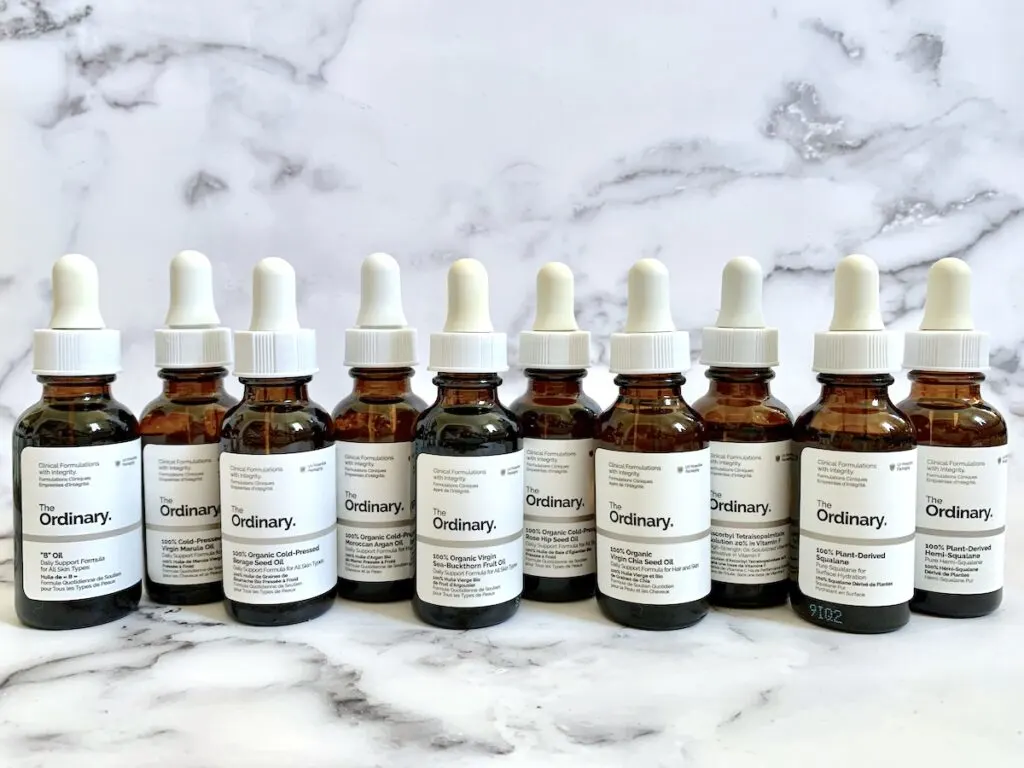
The last group of The Ordinary products, including the following serums, hydrators, and oils, have no conflicts. Yay!!
You can use these The Ordinary products without worrying about conflicts:
- Squalane Cleanser
- “B” Oil
- 100% Organic Cold-Pressed Borage Seed Oil
- 100% Organic Cold-Pressed Moroccan Argan Oil
- 100% Organic Cold-Pressed Rose Hip Seed Oil
- 100% Organic Virgin Chia Seed Oil
- 100% Cold-Pressed Virgin Marula Oil
- 100% Organic Virgin Sea-Buckthorn Fruit Oil
- 100% Plant-Derived Squalane
- 100% Plant-Derived Hemi-Squalane
- Alpha Arbutin 2% + HA
- Amino Acids + B5
- Hyaluronic Acid 2% + B5
- Marine Hyaluronics
- Caffeine Solution 5% + EGCG
- Natural Moisturizing Factors + HA
- Natural Moisturizing Factors + PhytoCeramides
- Mineral UV Filters SPF 15 with Antioxidants
- Mineral UV Filters SPF 30 with Antioxidants
The Ordinary has so many wonderfully affordable and results-driven products.
From skin concerns like wrinkles and fine lines to acne and hyperpigmentation, The Ordinary has a product for many skin types and issues, even if you’re a skincare beginner.
Just remember that you should not use some The Ordinary products together. Mixing certain The Ordinary products may result in irritation, breakouts, or other skin reactions.
Next Steps…
It’s important to understand the skincare ingredients in your products and how they interact, so you can create a routine that works best for your skin.
Once you’ve figured out what products work together for your needs, you may wonder how to layer them. Please see this post for how to layer The Ordinary products.
For The Ordinary skincare routines based on skin type or skin concern, please see the following posts:
Thanks for reading!
Read Next: The Ordinary Expiration Dates (with PDF)

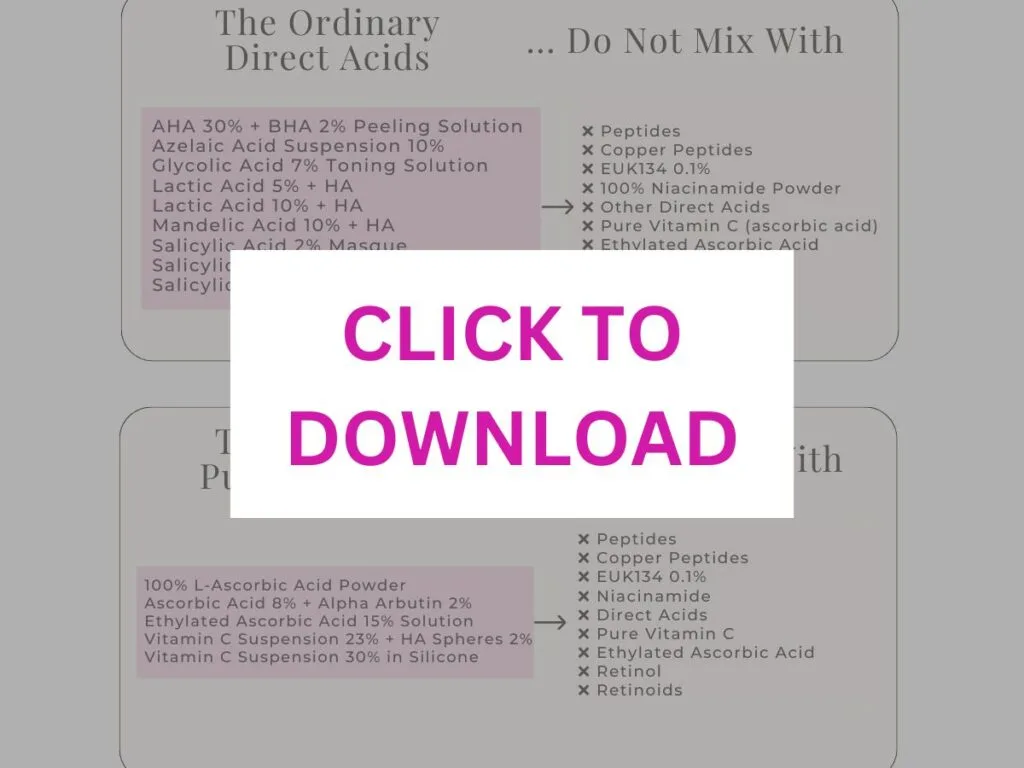

Kathleen Harris
Wednesday 24th of May 2023
Hi Sarah!
Excellent information to have! I have two of The Ordinary's products, and I'm very glad to see that nothing in my routine conflicts with them.
Thanks, Kathy
Sarah
Friday 26th of May 2023
That's great to hear! Thanks for sharing Kathy!!